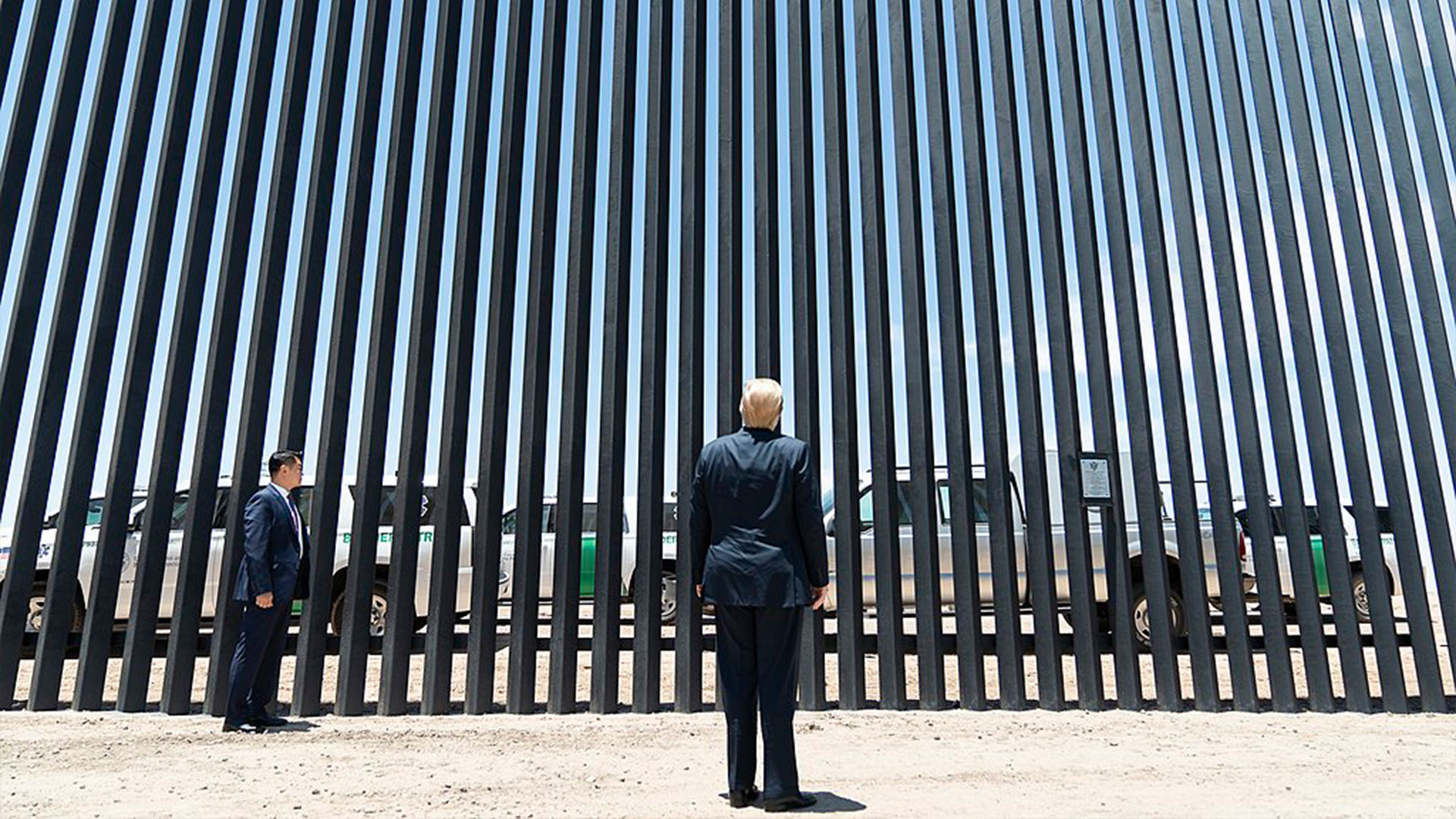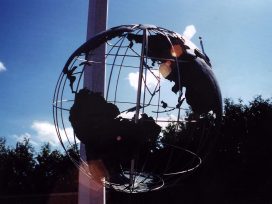In a modern representative democracy, power alternates via elections. Or, as one minimalist definition puts it: ‘democracy is simply a system in which incumbents lose elections and leave when they lose’. But since they only leave after the event, democracy on this account of it can only ever prove itself ex post. In other words: democracy rests on a norm that cannot be imposed upon those whom the norm needs to be imposed – namely those in power, precisely because they are in power.
In an interview in 2017, Adam Michnik, the former Solidarność activist and editor of Gazeta Wyborcza, was asked whether Kaczyński would suspend the mechanisms of democracy in Poland. ‘I don’t know,’ he responded. ‘I wouldn’t rule it out. He could go about it in only one way: he would somehow have to repeat Piłsudski’s May coup.’ Michnik was then asked whether he believed that the Poles would be capable of defending their democracy. His reply: ‘In the long run, yes.’
The historian Adam Tooze posed a similar question in 2019: ‘Could Trump’s presidency really have the makings of a descent into fascism?’ His answer was the same: ‘It cannot be ruled out.’ Commenting on a key moment in Donald Trump’s route into the White House, Steven Levitsky and Daniel Ziblatt ask: ‘Had the Republicans nominated a would-be dictator?’ Their response: It was impossible to know for certain.’ Four years later, it still isn’t certain.
This inability to ‘rule out’ or ‘know for certain’ is the constant of democracy. After all, wouldn’t anything else be naive? Shouldn’t we always be prepared for the worst?
Suspicion
The way that Trump plays with uncertainty, tests out what is thinkable and conceivable, seems to be precisely what makes him so fascinating. Like with a car accident, one cannot look away. His game is ‘to keep the country in suspense’, as he put it before the 2016 elections, when asked whether he would accept the results. By forcing us to continually speculate about whether he will break the rules, he forces us to play his game. This creates suspicion. Trump’s former attorney Michael Cohen, in his testimony before the House of Representatives in February 2019, expressed his fear that if Trump loses the election in 2020, ‘there will never be a peaceful transition of power’. Conspiracy theory is the logic of populism – and it is a logic that affects everyone.
But perhaps we should stop looking spellbound at the coming election and its outcome? After all, the current wisdom is that democracies die not with a bang, but with a whimper. Perhaps the United States made the transition to a soft dictatorship long ago and people simply failed to notice. Will the decisive moment prove retrospectively to have been a small, inconspicuous piece of news, a note in the margins?
Since 2015, the Federal Election Commission, whose job is to ensure compliance with electoral law, and whose six members are confirmed by the Senate, has repeatedly been unable to work due to lack of a quorum. In May 2020, having been inoperative for 37 weeks, it was finally able to return to work, only for another member to resign in July. Since then, the Commission has again lacked a quorum. In other words, weeks before the USA goes to vote, properly monitored elections are not possible.
However, there are other reasons to believe that the USA has been transiting to an emergency dictatorship for some time. Back in February 2019, Trump declared a national emergency at the Mexican border. This move came after a 35-day government shutdown, caused by the refusal of Congress to authorize the 5.7 billion dollars Trump wanted to build the new wall on the Mexico border. Although the Senate and the House of Representatives voted by a majority to terminate the emergency, Trump vetoed the decision. Because it lacked the necessary two-thirds majority, the House of Representatives was powerless to overturn the veto. Trump then diverted around 4 billion dollars from a range of military construction projects to build the wall. Active duty troops were sent to reinforce the National Guard members already on the border and detention camps were set up on army bases for migrants, including unaccompanied children. The declaration of national emergency was renewed in February 2020.
The Emergency Act, which developed out of emergency powers granted to the President in wartime (as the Trading with the Enemy Act of 1917), provides for sweeping presidential powers in the case of a declaration of emergency, the condition for which is an extraordinary threat to national security. In the Trump world-view, even an excessive import of German cars can constitute such a threat. Trump’s order via Twitter that US firms replace Chinese firms as trading partners was retrospectively justified via the International Emergency Economic Powers Act of 1977. The two houses of Congress can repeal a declaration of emergency but if the president uses the right of veto, the House of Representatives and the Senate are unlikely to have the majority necessary to override it.
If the president does not rule by emergency declaration, he rules by executive order, as Barack Obama was increasingly forced to do in the face of the obstructionist Republican majority in Congress. The only mechanism available to contest these is through court injunctions. As a result, politics shifts from parliament to the legal system. In the eight years of the Obama administration, there were twenty nationwide injunctions against presidential decrees. In the first three-and-a-half years of the Trump administration, there were almost forty.
The administration in turn appeals against injunctions with the Supreme Court. Decisions are made by judicial bodies rather than political majorities: law becomes politics by other means. This, too, contributes to the downgrading of parliament and ultimately of democracy as such, not least because it increases the incentive for government to assert control over the judiciary. Decisions that cannot be taken by parliament and the parliamentary parties migrate to other arenas – bringing conflict with them.
Uncertainty
But is US democracy really undergoing a slow-motion transition to emergency rule? Are we really seeing the progressive Weimarization of the US constitution? Are lawsuits against the emergency decrees really the belated whimpering of the judiciary?
One thing is for certain about democracy, and that is its uncertainty. According to Claude Lefort, a democratic society is one ‘in which people agree to live with the challenge of uncertainty’. In Crises of Democracy (2019), Adam Przeworski concludes with the following: ‘One should not believe the flood of writings that have all the answers … What all of this adds up to – what the prospects are for democracy’s survival under such conditions – one can only speculate about.’ In other words, after all the public reflections about democracy, we can at least say that there’s not that much we can say.
The question, ‘Are we in trouble or not?’ (David Runciman) doesn’t only arise for observers. The first to sound the alarm are always on the safe side, or at least the right side. Politically, it pays to accuse. Whoever plays with democratic uncertainty, as Trump does, can be certain to capture our attention. And whoever sees democracy as being endangered can be certain of our support. The idea of a plot against the will of the people complements the idea of the will of the people. Those who potentially threaten democracy and those who diagnose such a threat are twin figures. As François Furet put it,democracy and the anti-democratic conspiracy ‘are opposite sides of what one might call the democratic fiction of power’. Both are manifestations of the democratic délire sur le pouvoir. Democrats are those who identify anti-democrats, whereas Steve Bannon dryly comments: ‘the resistance is our friend’.
So is the conflict over democracy part of democracy itself? Shouldn’t we welcome this conflict as a sign of a vigorous democracy? In a sense, the answer is yes. However, the problem is that the conflict over democracy contradicts the democratic ‘metaphysics of equality’. After all, democrats must necessarily deny common ground with anti-democrats. But isonomia, or equality, is a precondition of democracy and part of the process of peaceful coexistence and regulated conflict. The (destructive) conflict about democracy takes place at the expense of (constructive) conflicts within democracy. The procedural agreement that enables democracy to function is suspended if one suspects that the other side has no intention of honouring it.
The pervasiveness of this suspicion today is a sign that we have moved beyond the ‘post-democracy’ diagnosis. The question is no longer whether democracy has been hollowed out. Both camps – the populists and the anti-populists – now see politics as a battle between the defenders and the opponents of ‘true democracy’.
Re-entry
Once we reach this level of mistrust, discourse becomes so feverish that it is incapable of recognizing its own paradoxes. According to critics, the populist as ‘self-appointed spokesman of the masses’ (Max Weber) claims to represent the ‘true people’ against corrupt elites. Populism, so this argument goes, is dangerous because it excludes others from its vision of the people. The ‘true democrat’ is a pluralist, and pluralism precludes exclusion. So the ‘true democrat’ would never exclude. Populists, as anti-pluralists, must therefore be excluded from the community of ‘true democrats’. It is our sacred democratic duty to divide society into two groups: those who divide society into two groups, and those who do not.
We thus see an inflation of exclusionary demands in the name of inclusion; a refusal of debate in the name of reason; a widening of suspicion in the name of tolerance; a ‘denial of coevalness’ through the discovery of our fellow citizens as either exotic or plain stupid. Talk of ‘a new fascism’ combines with pleas for more moderate political language and lamentations over deepening societal divisions.
The self-proclaimed enlightenment produces sprawling territories of ‘counter-enlightenment’, as if it had forgotten what the dialectic meant. At the moment of crisis, it is mutual recognition – the bona fide as a prerequisite of the democratic contest – that is increasingly in doubt. This creates the paradox whereby speaking about the enemies of democracy is as destructive to democracy as not speaking about them.
Diagnoses of democracy’s demise are therefore self-reinforcing and self-affirming; indeed, it is this dissociative undertow that makes them so appealing. The re-entry of the democratic/undemocratic dichotomy into democracy itself is a consequence of democracy’s victory over all its alternatives. Democracy can no longer, as it did in the era of global systemic competition, define and stabilize itself in opposition to an extraneous, totalitarian other. Instead, totalitarianism has become immanent and innate – at least, according to the pessimistic interpretation.
This is the tragic, ironic or merely paradoxical consequence of the total victory of liberal democracy – the destabilization of the democratic order as a result of its unmitigated success. Democracy as principle of legitimacy may be less controversial now than at any time since 1789. But what democracy precisely entails has never been more controversial. Now that only democrats have survived, they form camps, each casting doubt on the other’s claim to be truly democratic.
But democracy cannot credibly make itself its own object. In a democracy, party competition cannot form along democratic/undemocratic lines: us versus the anti-democrats! Of course, it is possible to mobilize support this way, even quite successfully. But one ends up with a concept of democracy that necessarily excludes the possibility of the alternation of government through regular elections. In other words: one ends up with no concept of democracy at all.
This is why the re-entry of the democratic/undemocratic distinction into the democratic debate is not to be taken entirely seriously. Proof is the oft-noted mismatch between diagnosis and remedy: raising the rate of top income tax rate is hardly a commensurate response to the imminent death of democracy. This adds to our impression of living in a time of odd simultaneities: the crisis and non-crisis of democracy; a state of alert and business as usual; exception as routine.
Another aspect of the re-entry of the democratic/undemocratic distinction into democratic debate itself is that its defunct utopian competitors – fascism and communism – continue to lead a spectral existence. Each camp accuses the other either of wanting to deform democracy through ethno-nationalism, or of wanting to dissolve it through internationalism. The re-entry of the two major ideological formations of the twentieth century into what they both rejected, namely democracy, entails the return of what each promised to accomplish: the democracy of the future. The crisis of democracy is also an expression of the hypertrophies that both ideologies cultivated, hypertrophies which are now articulated as democratic. Democracy as future promise means whatever utopia either camp wants it to mean, be it nationalist or internationalist.
One upshot of all this might be that we recognize those who really take democracy seriously by their hesitance to diagnose the other as an enemy of democracy. Currently, however, we are seeing a boundless proliferation of suspicion.








